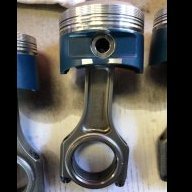The Fuel Pump Thread
Announcements
-
Similar Content
-
Latest Posts
-
New rear lights, filler panel sprayed, cleaned and back together before, during, after shots 😍
-
100% is gyprock, I agree. Slip of the keyboard. Haha! I left my indicator bulbs out to save a bit of weight.
-
Ah right. I got a new o2 sensor because the last owner disabled it (probably because it was dead and didn't want to buy a new one), here goes potentially for a new o2 sensor again lol.
-
Neither, do some more research on what actually works these days and go from there. Or just fit a 6466 with a twin entry rear and manifold and waste gate to suit and twin fuel pumps and 1650 injectors and a clutch and a bunch of other stuff I haven’t listed
-
By TurboTapin · Posted
I'm not certain of your capabilities but parts and labour of a 2.8 will be well above 15k. You could do things slowly though (I.E Buy parts, save up, build block, save up, build head, etc.) As mentioned, go single turbo.
-








Recommended Posts
Create an account or sign in to comment
You need to be a member in order to leave a comment
Create an account
Sign up for a new account in our community. It's easy!
Register a new accountSign in
Already have an account? Sign in here.
Sign In Now